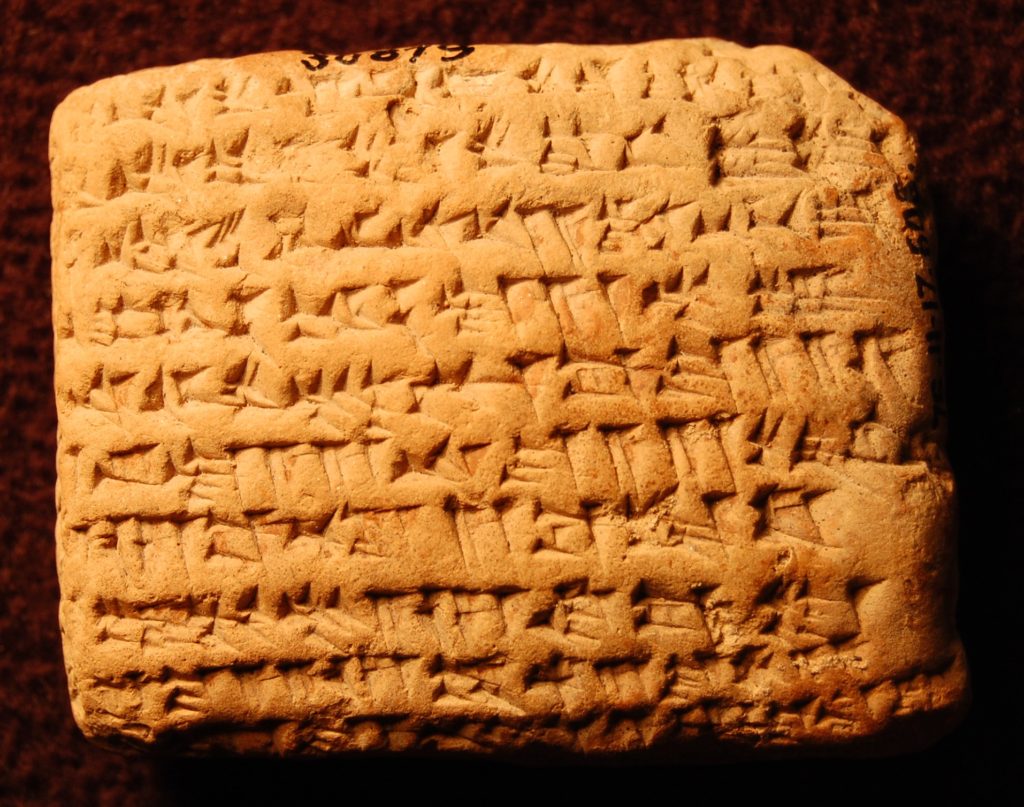
Clay cuneiform tablet, unknown creator, c. 530 – 522 BC, under Cambyses II of Babylon, British Museum (Reg. # 1876,1117.606AN584519001).
This small clay tablet is a receipt written in an ancient text called cuneiform. These wedge-shaped characters were used in the first writing systems in the world. In particular, this one is from the time of Cambyses II, ruler of Babylon. It is a receipt for the sale of a slave girl.
Slavery was normal in the Ancient world. While it may have been an accepted system then, this does not make it any more right than it would be today. Girls were bought and sold as slaves by the thousands for several purposes, like domestic workers and concubines. They were also acquired to become the wives of male slaves to produce more slaves for their masters. While having a roof over their heads may have been preferable to living on the street or going hungry, their bodies and minds were not their own.
Under the laws established by Babylonian ruler Hammurabi, girls did not fare well. Men were permitted to have sexual relations with their slaves. This gave male owners free reign to abuse their power. If they got the girl pregnant and decided to kill her, the owner only paid a fine. Equally horrible was the law that if a man killed a free woman, his daughter could be killed as punishment. Almost no protections for girls, free or owned, existed during this time.
Amazingly a tiny piece of rock can tell us what a girl’s life was worth. Slave girls in ancient Babylon were sold for between 5 and 12 shekels or around 1500 grains of barley. And so many of these stone receipts for slave girls still survive, mainly because one was made for both the seller and the buyer. But we know that not only was slavery common, it was important to be a slave owner. It gave men prestige and power.
Think about how this still affects masculine thinking today. While names, formalities and prices may have changed, slavery still happens all over the world. And the most frequent victims are girls.
-Ashley E Remer
Head Girl
Girl Museum, Inc.
This post is part of our 52 Objects in the History of Girlhood exhibition. Each week during 2017, we explore a historical object and its relation to girls history. Stay tuned to discover the incredible history of girls, and be sure to visit the complete exhibition to discover the integral role girls have played since the dawn of time.
